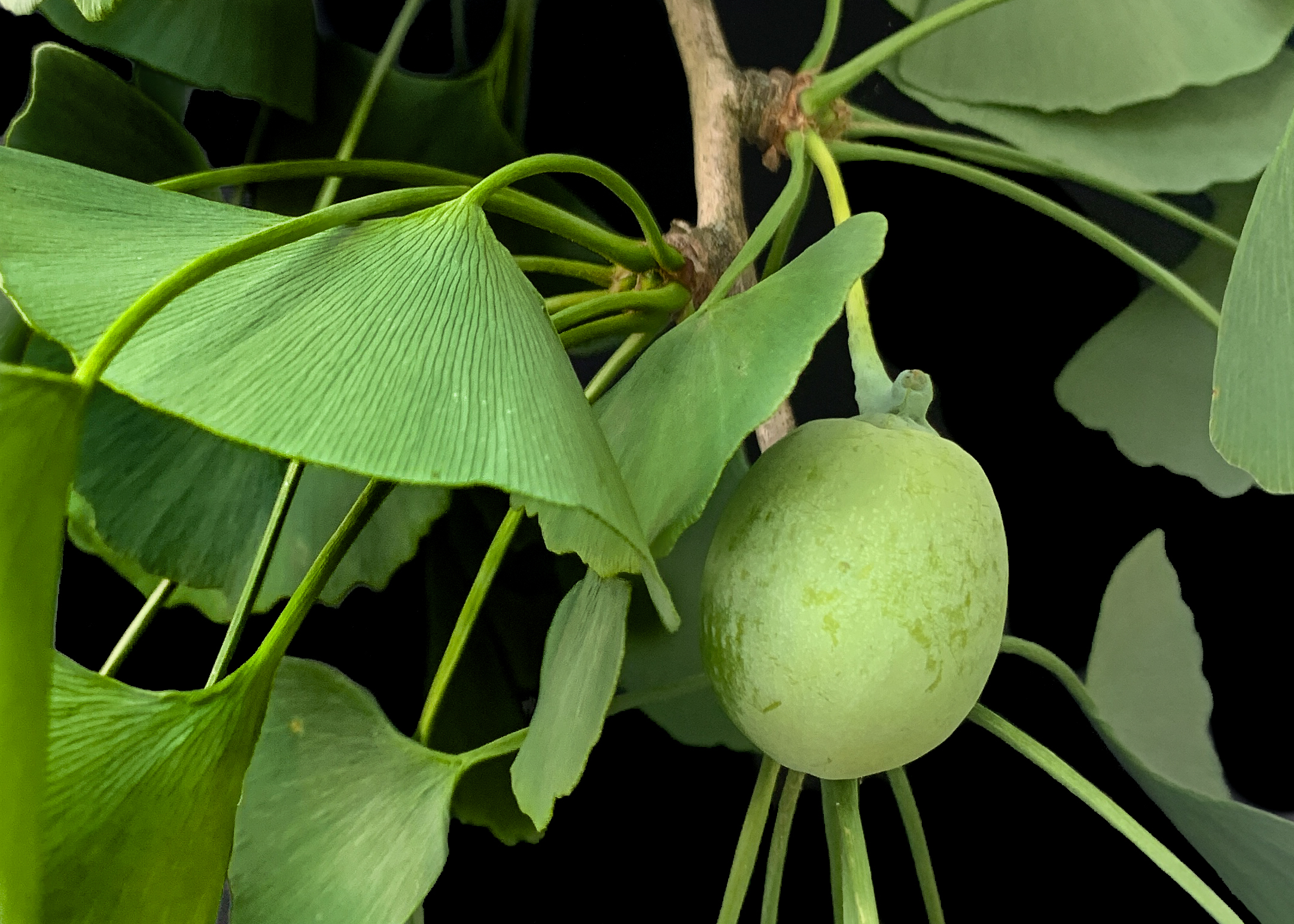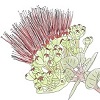8.4: Ginkgo
- Page ID
- 59249
Ginkgo (Phylum Ginkgophyta)
There is only one living species of ginkgo, Ginkgo billoba, which is native to China but is cultivated across the world in temperate regions. The fossil record shows that this group was once diverse and had a widespread distribution in the Northern Hemisphere during the middle Jurassic (170 million years ago). Fossils of these Jurassic plants look very similar to modern ginkgo, indicating their characteristics have changed little over time, granting the status of “living fossil” to the only surviving species.
Gingko is easy to recognize because of its fan-shaped leaves (Figure \(\PageIndex{1}\)). It is also known as the maidenhair tree, as the leaves resemble maidenhair fern fronds. Gingko can be either male or female. They are widely cultivated in urban areas because of their beautiful leaves, which change color in the fall. However, female plants produce a “fruit-like” structure that is actually a seed surrounded by a fleshy seed coat (they do not produce cones; Figure \(\PageIndex{2}\)). Seeds emit a foul odor, therefore male trees are preferred for cultivation in most urban areas. In Asia, however, ginkgo seeds are consumed boiled or roasted, therefore female trees are predominantly grown. Ginkgo is also used for medicine, such as a dietary supplement that is used to improve blood circulation.




